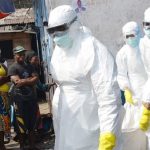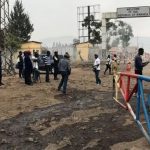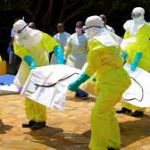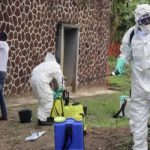 A deadly Ebola outbreak in Democratic Republic of Congo is stabilizing, giving reason for cautious optimism, the head of the World Health Organization said on Friday.
A deadly Ebola outbreak in Democratic Republic of Congo is stabilizing, giving reason for cautious optimism, the head of the World Health Organization said on Friday.
“It’s stabilizing. We’re optimistic, cautiously optimistic,” said WHO chief Tedros Adhanom Ghebreyesus.
He said he would travel to Congo on Sunday to check on progress a month into the outbreak, and would also go to neighboring Central African Republic as part of a drive to build up health systems in the fragile and impoverished country.
The deadly virus has killed 27 people since the outbreak began in April, and there have been 62 cases, 38 of which were confirmed in a laboratory. A further 14 are probable Ebola cases, and 10 more people are suspected of having Ebola.
Using the vaccine to ring-fence patients has almost certainly slowed the spread of the disease, WHO’s Deputy Director-General for Emergency Preparedness and Response Peter Salama told a news conference at WHO headquarters in Geneva.
“We have added cause for optimism because now we have reached… more than 98 percent of the contacts with vaccination,” Salama said.
Most patients who have been vaccinated had the jab more than 10 days ago, enough time to be confident that they were now protected, he said.
Phase one of the disease response was about protecting the urban centers and towns and that had gone well, Salama said, but phase two, tackling the remote forested areas, was an enormous logistical effort that would go on for weeks.
The area had no infrastructure and could be covered only by motorbike, with several hours needed to trace every contact, he said.
“There’s a lot of very tough work to do in phase two before we can say we’re on top of this outbreak and we’ve learned the hard way in the past never to underestimate Ebola.”













